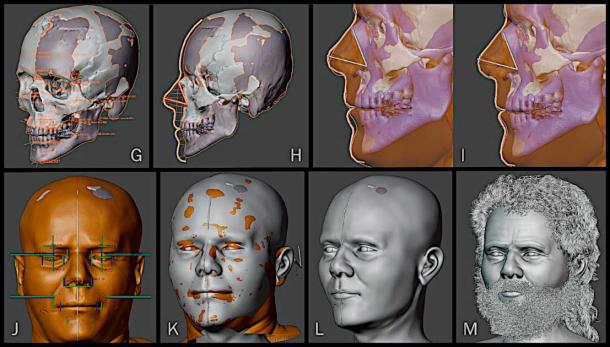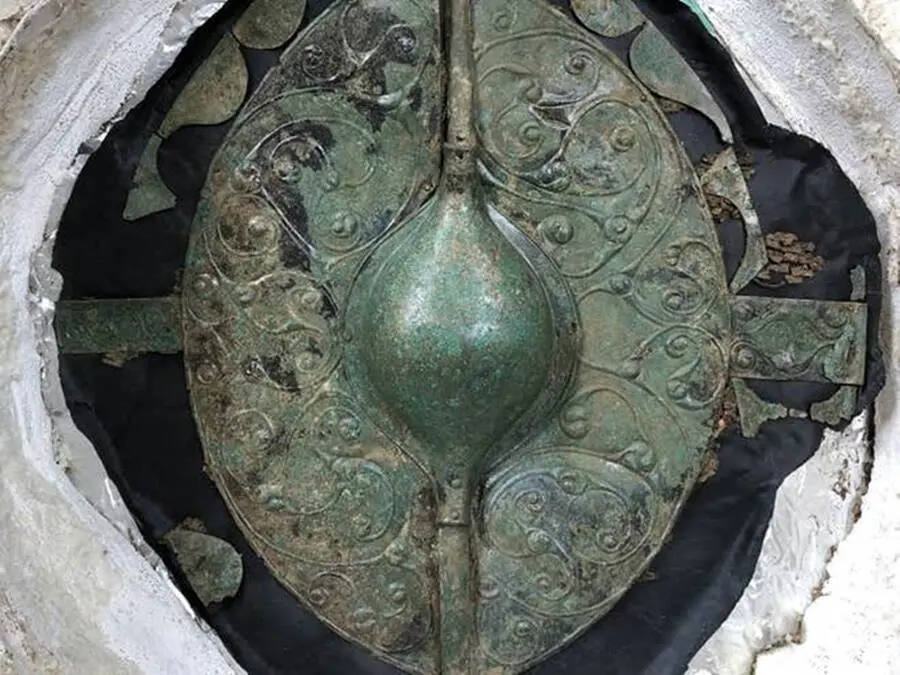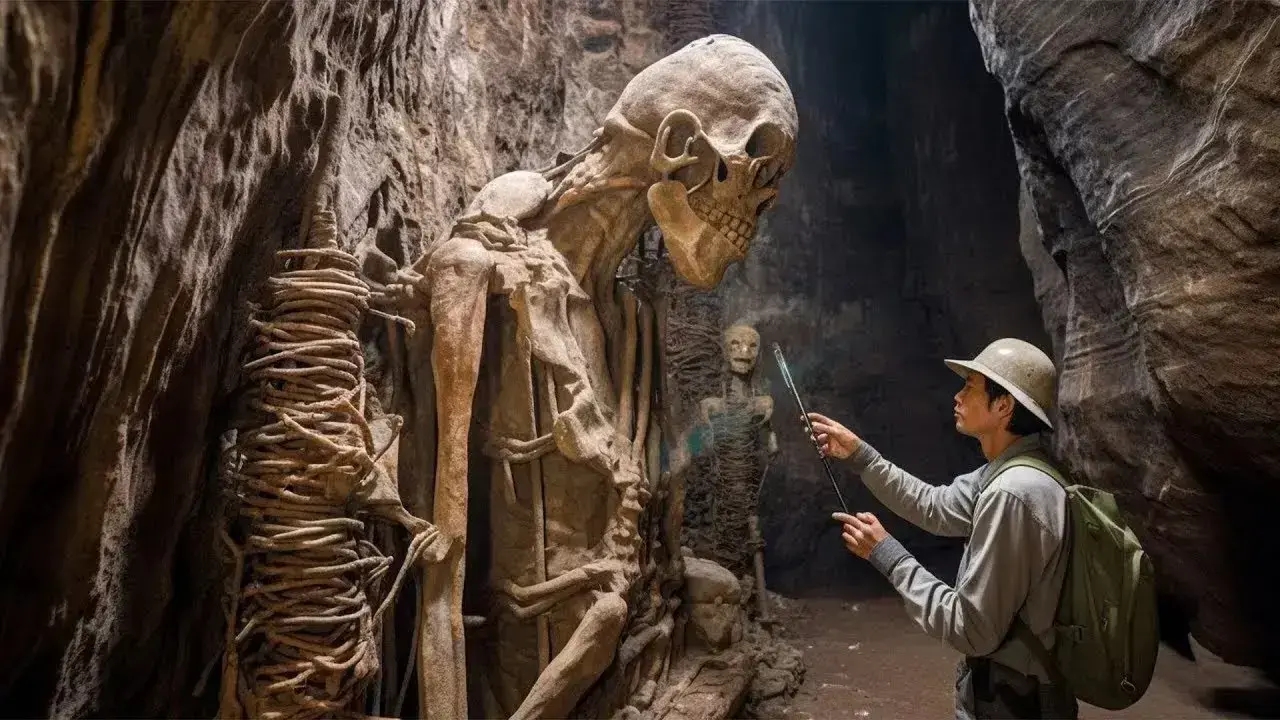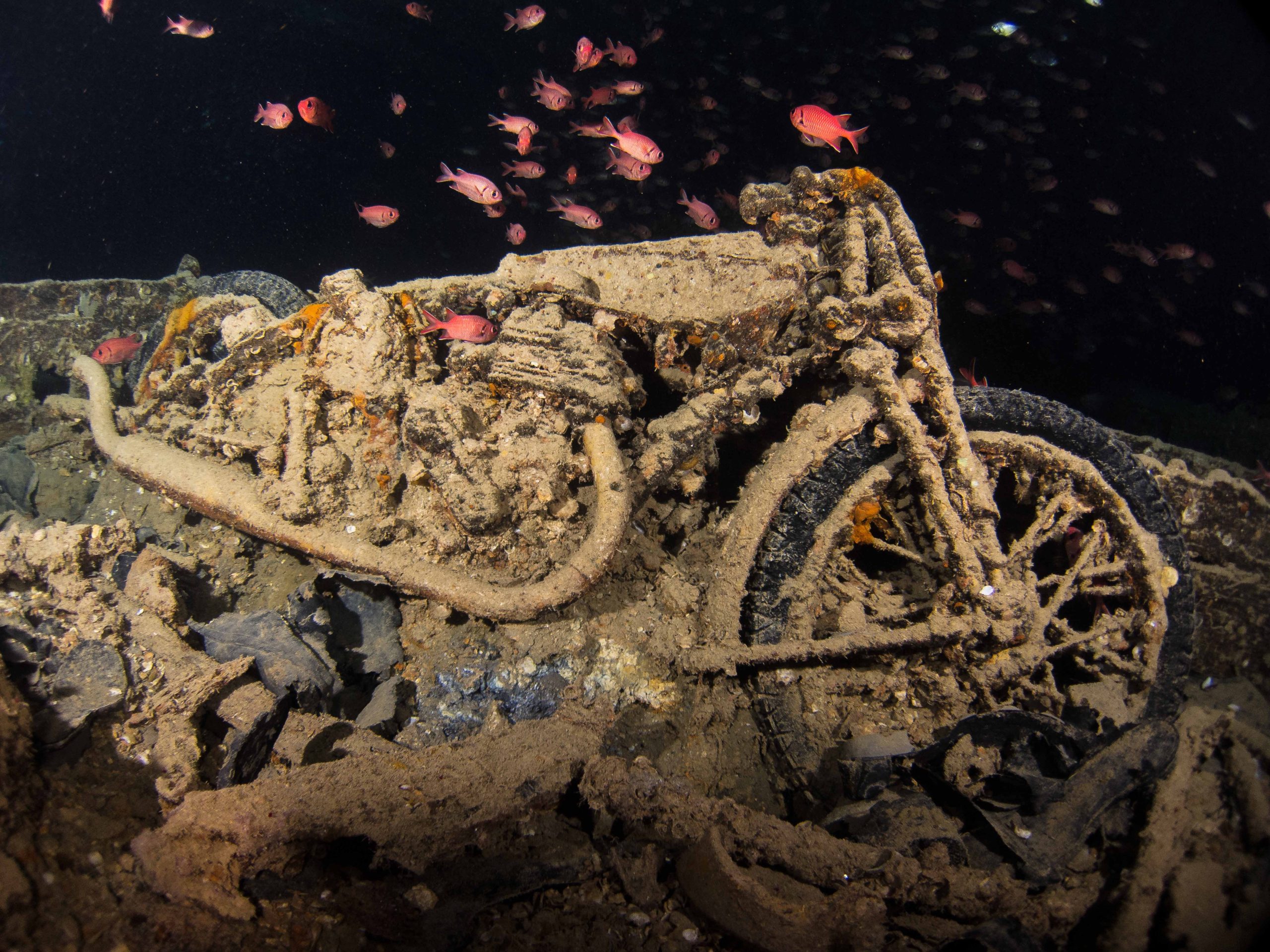Discovered in 1968 by an amateur archaeologist near Hochdorf an der Enz, Baden-Württemberg, Germany, and excavated in 1978/79, the Hochdorf Chieftain’s Grave is a richly furnished Celtic burial chamber dating from 530 BC.
It is one of about 100 such graves dating from the second half of the sixth century BC found in France, Switzerland, and Germany.
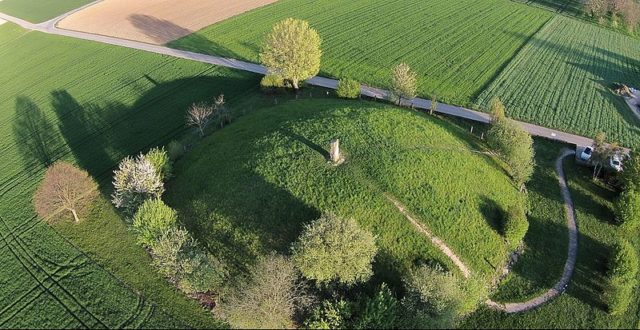
The man in the grave,who was laid out on a lavishly decorated 9 ft (275 cm) bronze couch on wheels, was about 40 years old and unusually tall for the Iron Ages, being just over 6ft tall. Judging by other objects found there, this man had probably been a Celtic chieftain.
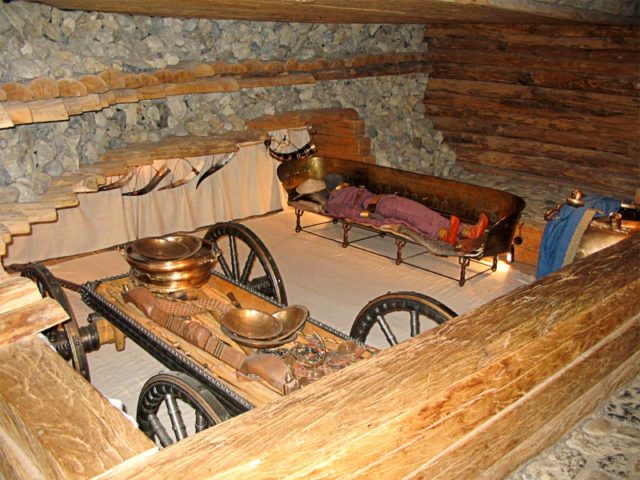
Reconstruction of the Celtic Grave in the museum. Photo Credit

Reconstruction of the grave of a Celtic prince in Hochdorf, Germany. Photo Credit
The well-preserved funerary objects provided deep insights into the world of the Celtic rulers.
He had been buried with a gold-plated torc on his neck, amber jewelry, a gold-plated dagger made of bronze and iron, a bracelet on his right arm, a nail clipper, a comb, fishing hooks, a flat cone-shaped hat made of birch bark adorned with circle patterns and punched decorations, arrows, a razor knife, and most notably, thin embossed gold plaques were on his now-disintegrated shoes.
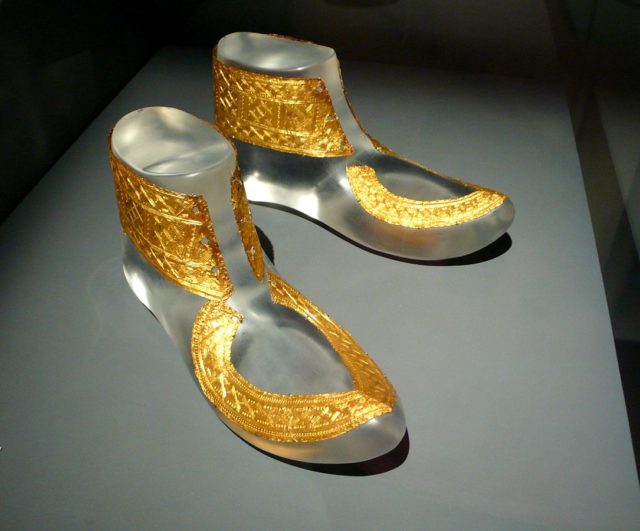
Hochdorf Chieftain’s Grave, golden shoe ornaments. Photo Credit

Dagger with gold foil. Photo Credit
The entrance to the mound was to the north, and the mound was surrounded by a stone ring and oak posts. The east side of the tomb contained an iron-plated, wooden, four-wheeled wagon holding a set of bronze dishes – along with the drinking horns found on the walls, enough to serve nine people. The one reserved for the host was delicately decorated with gold, the tip being adorned with beads made of bones.
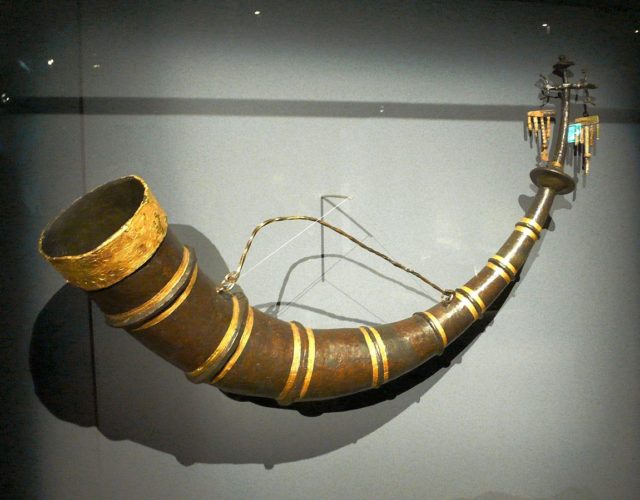
The largest and most precious drinking horn in the collection. Photo Credit

Celtic klinai, found in Hochdorf, Landesmuseum Württemberg. Photo Credit
Gilded in preparation for the afterlife, the nearly 14-inch long bronze, and iron dagger, with a blade protected by a richly decorated sheath, had been carried by the prince in life.
The gold coating made for the burial consisted of 16 parts, all precisely fitted onto the dagger without any fold. At his feet was a large bronze cauldron, filled with honey mead.

This lion is a Celtic replacement of the missing Greek one. Photo Credit
The grave is an enormous barrow mound, which was about 20 ft (6m) high and 197 yd (60m) in diameter when it was constructed. It had shrunk to about 3 ft (1m) height and was hardly discernible due to centuries of erosion and agricultural use. Following the examination of the grave, the burial mound was reconstructed in 1985 to its original height.
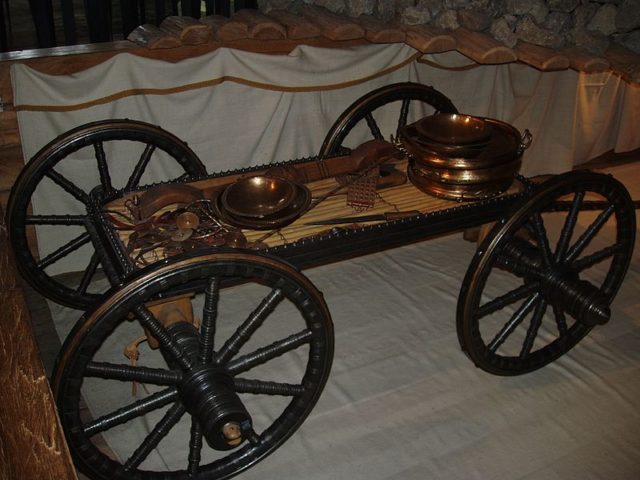
Reconstruction of the grave cart, loaded with goods. Photo Credit
Read another story from us: The Cult Wagon of Strettweg: a seventh-century bronze sculpture found in a princely grave in Austria
Nearby, a museum dedicated to the grave was built, during the construction of which the foundations of an ancient Celtic village were found, probably the one to which the chieftain belonged. The finds from this discovery were incorporated into the museum.
